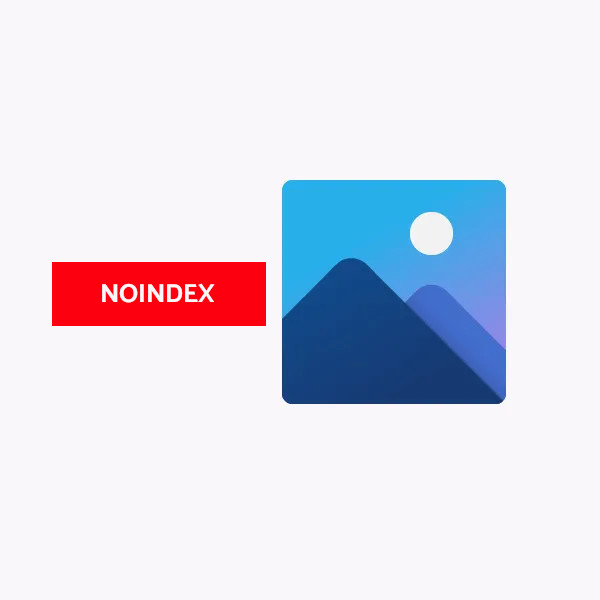The 4 Most Effective Ways to Avoid Appearing in Google Images

It may be for various reasons that you want to prevent the indexing of images on a website. Depending on the type of image, it may have different levels of interest for users, and in some cases, you might simply want to prevent certain images from appearing in Google Images.
As we cannot always change the entire structure of a project, we have several options for preventing image indexing. Depending on the variables we are dealing with, some methods may suit us better than others.
The noimageindex is an attribute of the robots meta tag, just like noindex and nofollow, there is also the noimageindex option.
The downside of this approach is that if the image is used elsewhere without this meta tag, it can still be indexed.
Nevertheless, it is quite effective for preventing the indexing of all images on a page. This can be particularly useful for pages with user-generated content, or for landing pages that we want to index, but without their images being accessible through Google Images.
The way to add this meta tag would be:
<meta name="robots" content="noimageindex">
It can also be specified for Google only, and combined with other attributes:
<meta name="googlebot" content="nofollow, noimageindex">
When an image is inserted via CSS, it is treated as a decorative image — just another styling element of the website. Although Google can crawl and correctly render the image, it will not index it in Google Images.
As with the noimageindex attribute, if someone places the same image elsewhere using the img tag, it could then be indexed.
An example of inserting an image via CSS would be:
<div style="background-image:url(/example.jpg)"></div>
Note: I have shown the example inline for ease of reading, but it could equally be done using internal or external CSS — with the same effect on image indexing.
The robots.txt file is often overused, and it's quite common to see the mistake of "trying to prevent indexing" by blocking crawling (spoiler: blocking crawling does not prevent a blocked page from being indexed).
However, the case of images is slightly different. Google does not show images in Google Images that it cannot access. Therefore, if images cannot be crawled, rendered, or processed, they also won’t be indexed.
Example:
User-agent: *
Disallow: */images/*.jpg
Disallow: */images/*.png
Disallow: */images/*.gif
Disallow: */images/*.avif
Disallow: */images/*.webp
Disallow: */images/*.jp2
Disallow: */images/*.jpeg
By using the x-robots-tag method, you can add meta tags to content that cannot include HTML — such as images.
This practice is quite efficient because you can add a meta robots noindex and make images fully crawlable, but never indexable, regardless of how many times or where they are inserted.
This achieves the same effect as using robots.txt, but this time allowing crawling.
It is the cleanest practice, although it is also the most complex to implement.
Loading images through CSR (Client-Side Rendering) or inserting them via a JavaScript function may make indexing more difficult, but it does not prevent it. Therefore, it is not a sufficient solution.
If you use the noimageindex attribute or insert images via CSS but also link them in the image sitemap, it is quite possible that your image will end up being indexed.
This alternative can have various consequences at the WPO level, but currently, Google can crawl and index these images without any problem.
As we have seen, there are several effective methods for preventing the indexing of images, depending on the needs and structure of each project.
From using the noimageindex meta tag, to inserting images via CSS backgrounds, or even controlling indexing through HTTP headers, each technique has its advantages and limitations.
It’s important to remember that some common practices, like relying on JavaScript loading or simply omitting images from sitemaps, are not reliable ways to prevent indexing.
Choosing the right method will depend on the specific case, but whenever possible, using HTTP headers offers the cleanest and most robust solution.
In short, taking control over how your images are indexed (or not indexed) is another key factor in optimising the visibility and management of your website's content.
I currently offer advanced SEO training in Spanish. Would you like me to create an English version? Let me know!
Tell me you're interestedIf you liked this post, you can always show your appreciation by liking this LinkedIn post about this same article.